We had a delightful sgraffito workshop Sunday, October 11, at Lill.
I started with the basic question of what is slip?
In its simplest form, slip is clay that has had water added to it, possibly pigment and been sieved to make it very smooth. At Lill, we use Grolleg porcelain and Mason stains for colorant.
I talked about application.
It is key to understand how slip works – a wrong application will just come off your pot.
Because slip is CLAY, it shrinks. That means you can not put it on a bone dry pot. Your slip will shrink as it dries and simply flake off.
Because it is Porcelain, it shrinks at a slightly different rate than stoneware and therefore when you apply it to stoneware, you have to be more careful that it bonds to the surface or again, it will come off- sometimes even after the glaze firing.
Here is an example of Porcelain on porcelain- THICK and I know (because I watched her) that this was put on with a frosting bag onto leather hard porcelain. This is a photo of the bisked piece- it made it through the drying and firing process without coming off:

So while it is pretty easy and forgiving to put a porcelain slip onto porcelain pots,
I have a couple of tips for applying it to stoneware.
First of all, the more “wet” your stoneware, the better – although the other end of that spectrum is, that your pot will absorb some of the liquid from the slip and could, conceivably, collapse from absorbing too much moisture.
That is the beauty of the slump mold- it can just lie there, bonding while it dries.
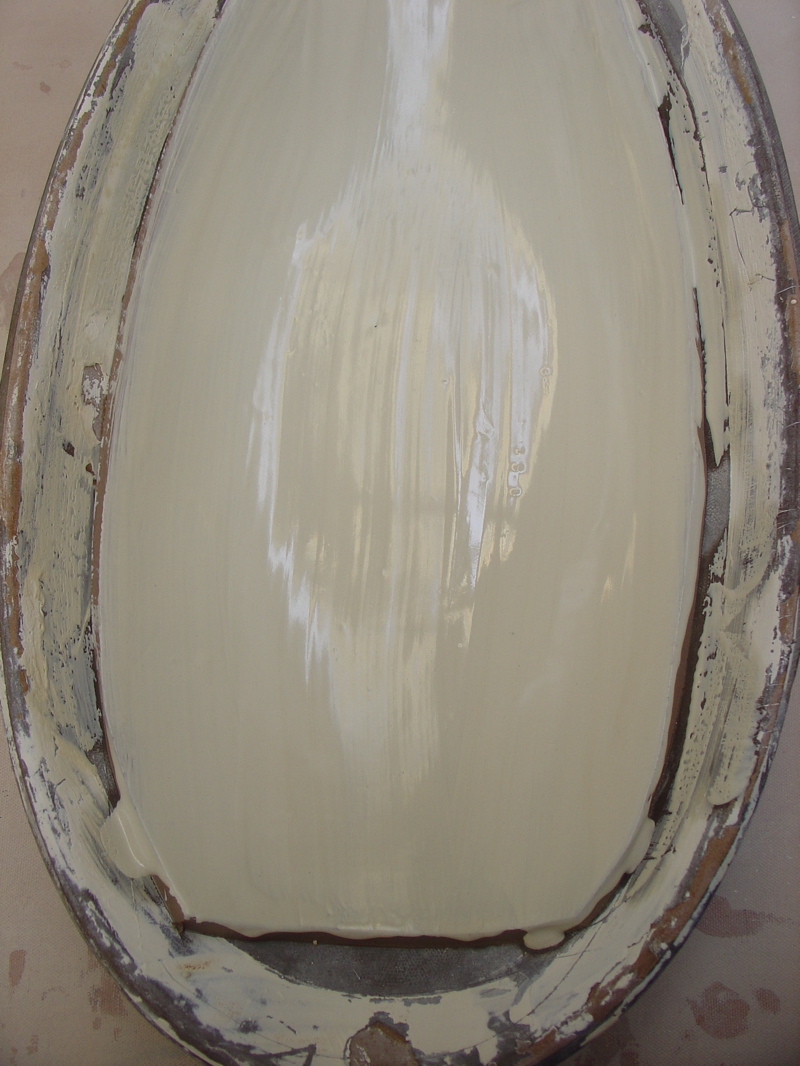 You can see it’s white slip over stoneware if you look at the edge.
You can see it’s white slip over stoneware if you look at the edge.
It also helps to put it on thinly
and lastly, it helps to burnish it on to further bond it with the surface of your pot. You can do that when the surface is leather hard.
What I do for application is fairly ideal; I put the slip on my porcelain pots after they are leather hard and I’ve trimmed them.
I then “carve” (or sgraffito) them while they are still leather hard.
This also reduces my chances of breathing in a lot of clay dust as my shavings are still wet.
Because those shavings dry quickly and then they do become dusty, I then dump them in a little cup or bowl of water to keep them out of my lungs!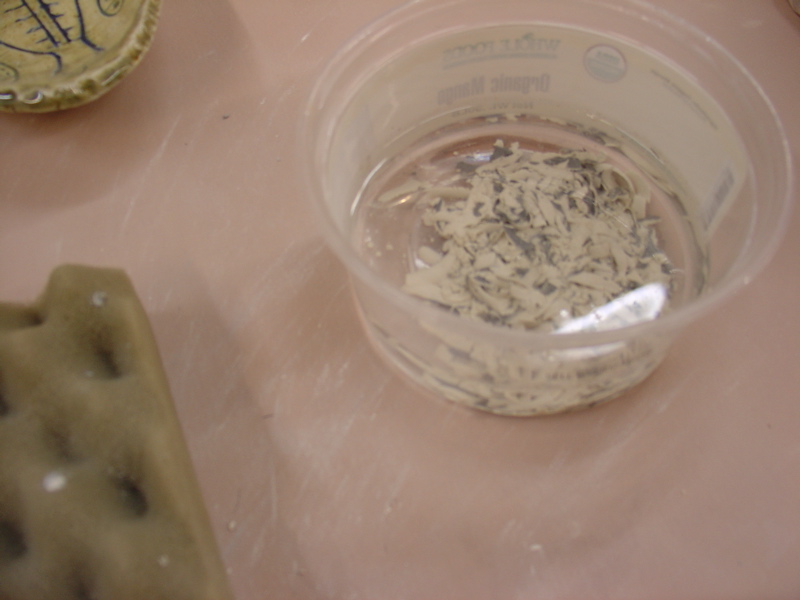
Now that the pots were ready, I started in on the fun stuff.
Basic sgraffito is just scratching through slip. that’s what I did for this rabbit plate.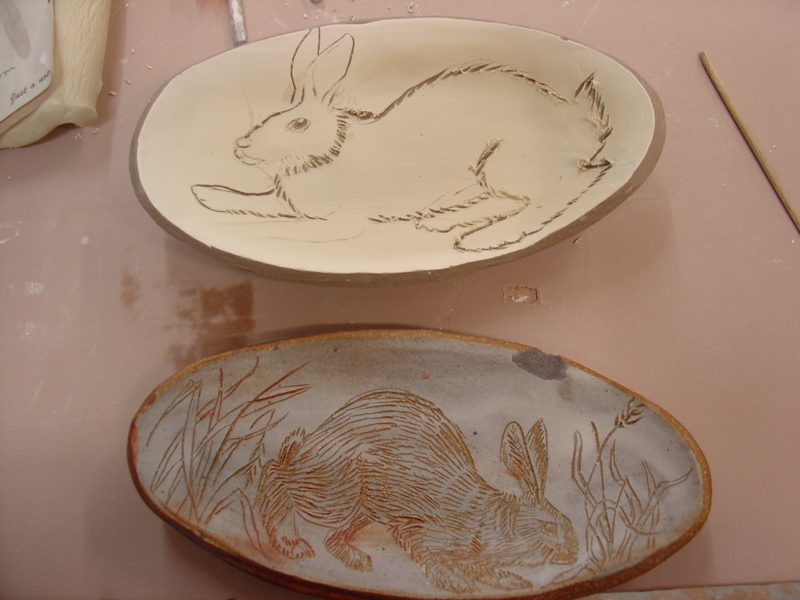 Here is an example of the same technique (and her inspiration!) by one of the students. This is slip over Terra Cotta.
Here is an example of the same technique (and her inspiration!) by one of the students. This is slip over Terra Cotta.
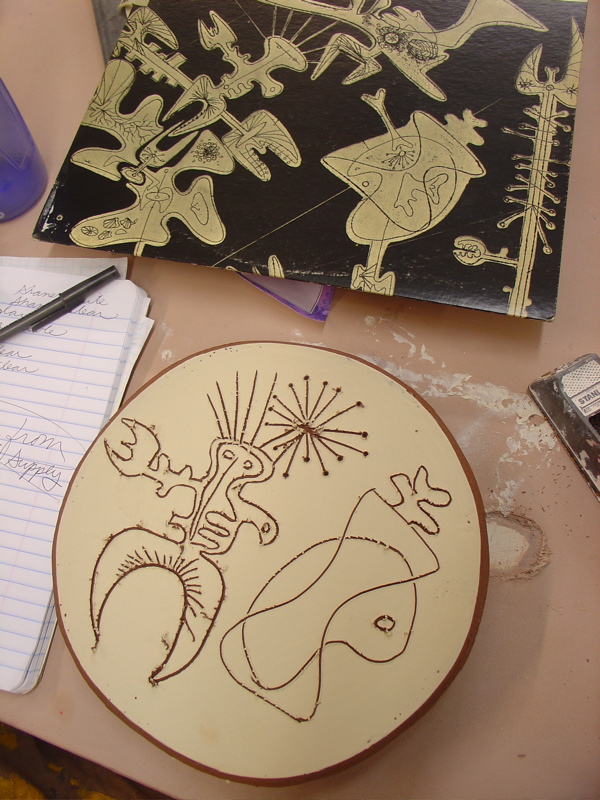 Isn’t that cool?
Isn’t that cool?
Here are two more examples from the shelves of Lill- these are both with a dark slip and white of the porcelain showing through- quite the reverse!
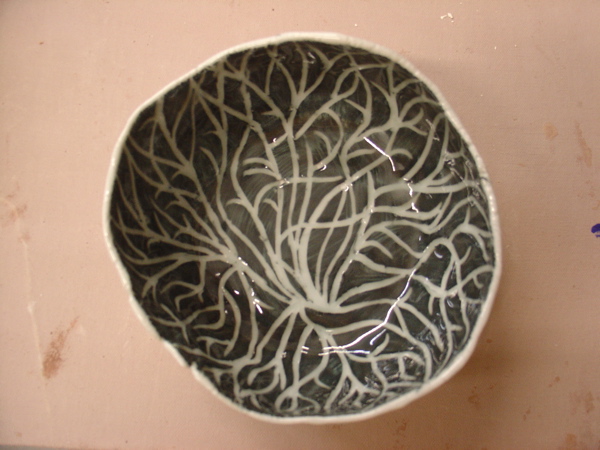
The next type of sgraffito uses the negative space to make the picture: in this case an octopus.
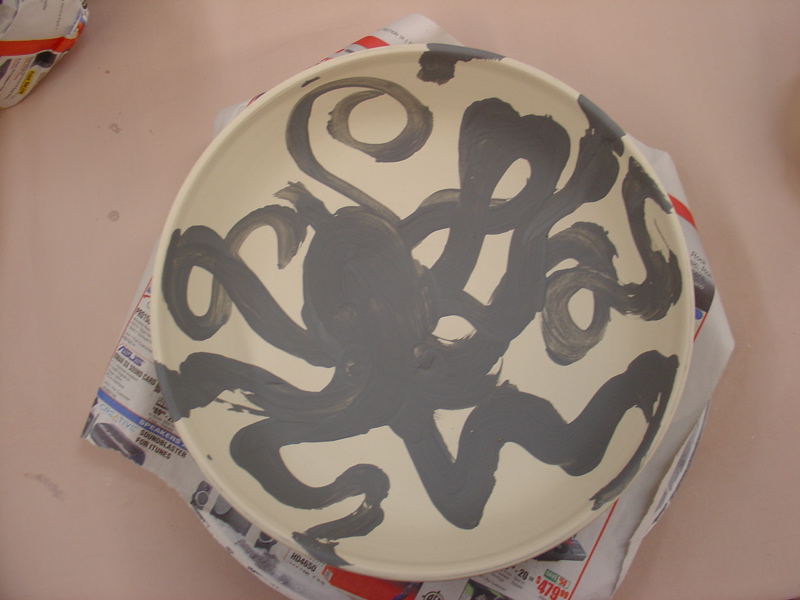
There are several ways to do this- one is to rough in the basic design without covering the entire pot with slip. This has the advantage of saving time and guiding your design but it can be limiting in that you have to stick with the lines you painted on.
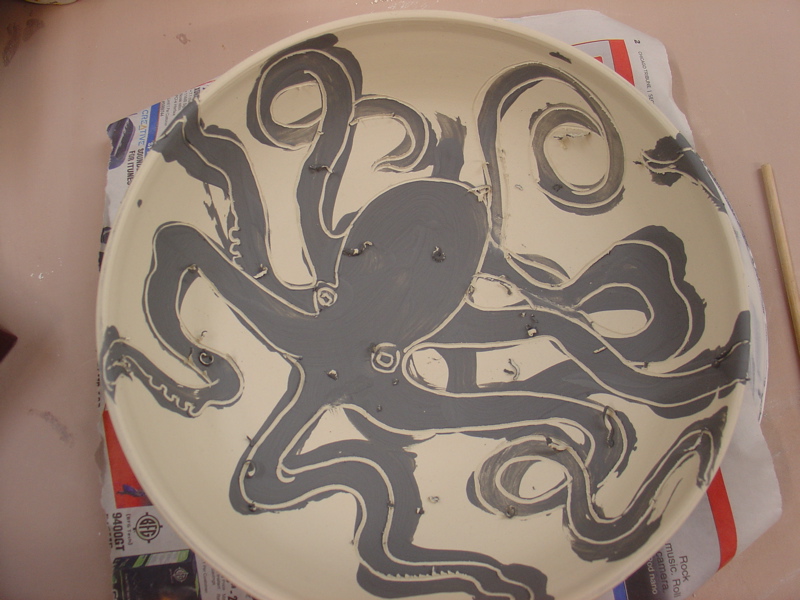 And then after carving:
And then after carving:
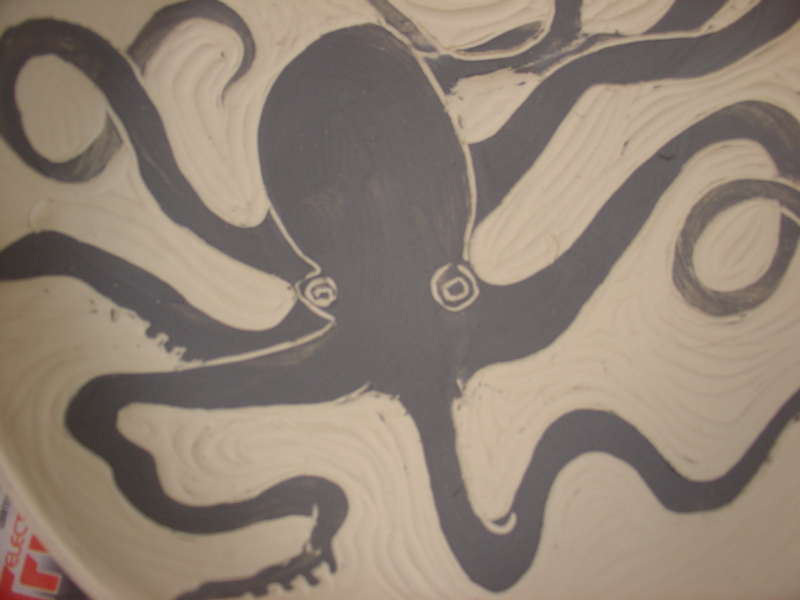
If you cover the entire piece with slip, it becomes a blank slate upon which, you can draw anything. If I don’t know what I’m going to draw ahead of time, I will paint the whole thing and look for inspiration in the patterns and textures of the slip when it’s on the pot.
Layered slip gives you some interesting lines qualities- in this case I started with white over stoneware. Once that was bonded and the piece leather-hard, I put on a layer of black, waited for that to stop being shiny and added a layer of aqua.
I drew fish with simple lines.
Here is the tray with layered slip (blue over green over white on stoneware) I did from the last workshop. It is glazed in Celadon.

Inlaid slip is the complete reverse of the technique I used to draw the rabbit. There are several helpful things to know when you are inlaying slip. It is probably more important to make your lines deep than wide since you will be scraping off a thin layer of the pot, a shallow line can disappear. The drier the slip and the pot, the cleaner the line will appear when you are scraping. This is what a partially scraped inlaid piece looks like (black and a little blue in porcelain)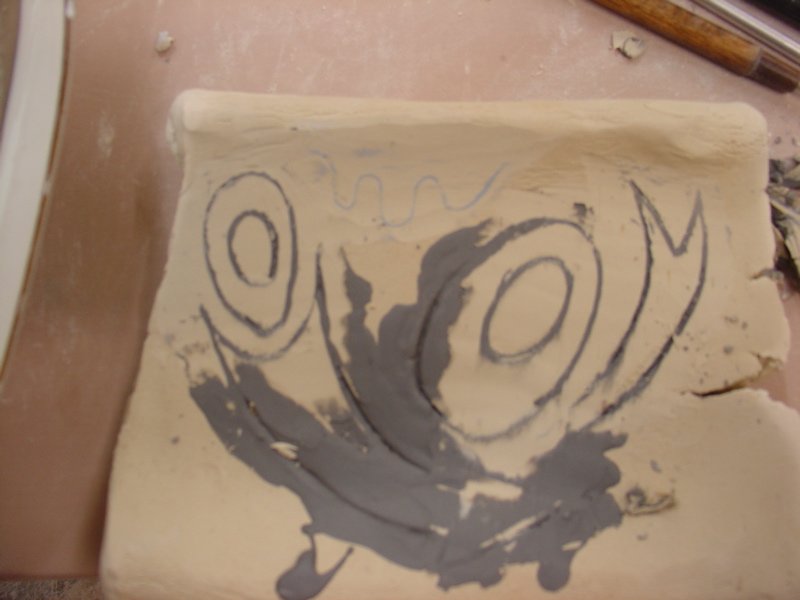
Here is an example of Jeanne’s. 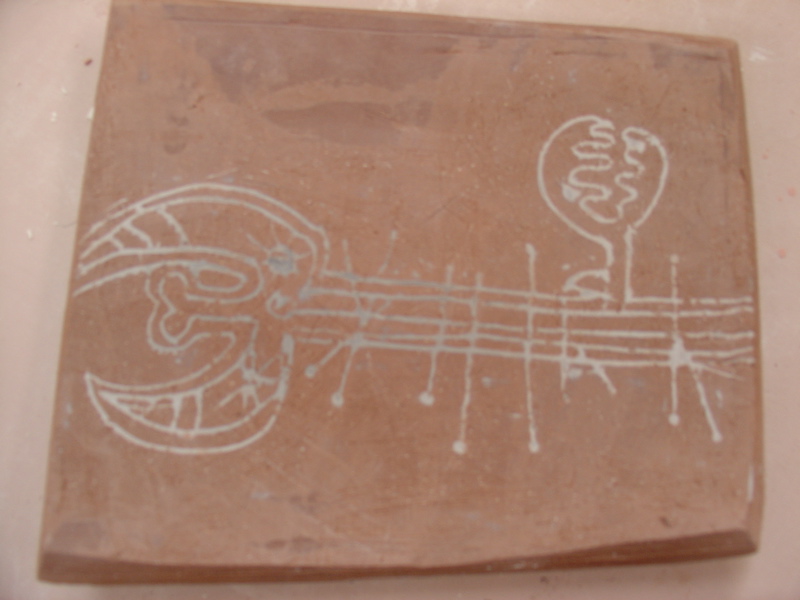 Here is the tray in inlaid for the last workshop. It is glazed in Shaner clear mixed with Temoku.
Here is the tray in inlaid for the last workshop. It is glazed in Shaner clear mixed with Temoku.
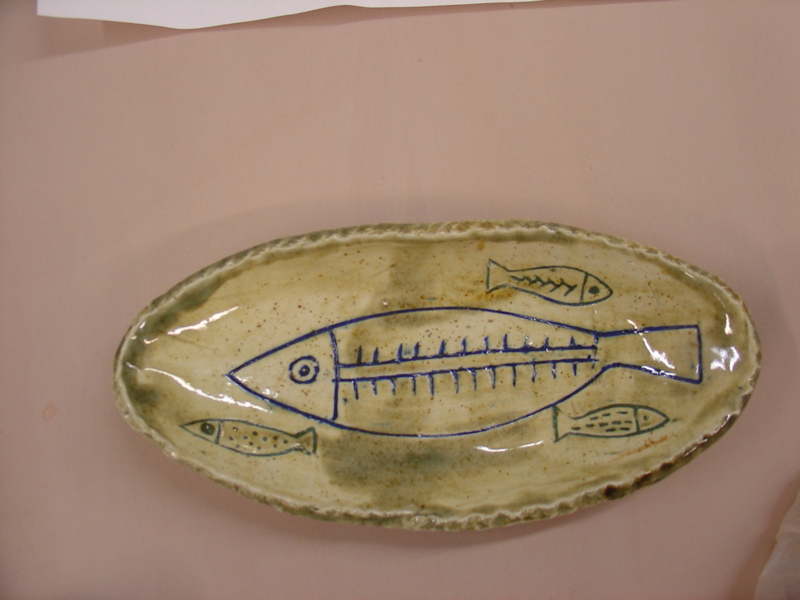
Here are a couple more examples of (really great) student work!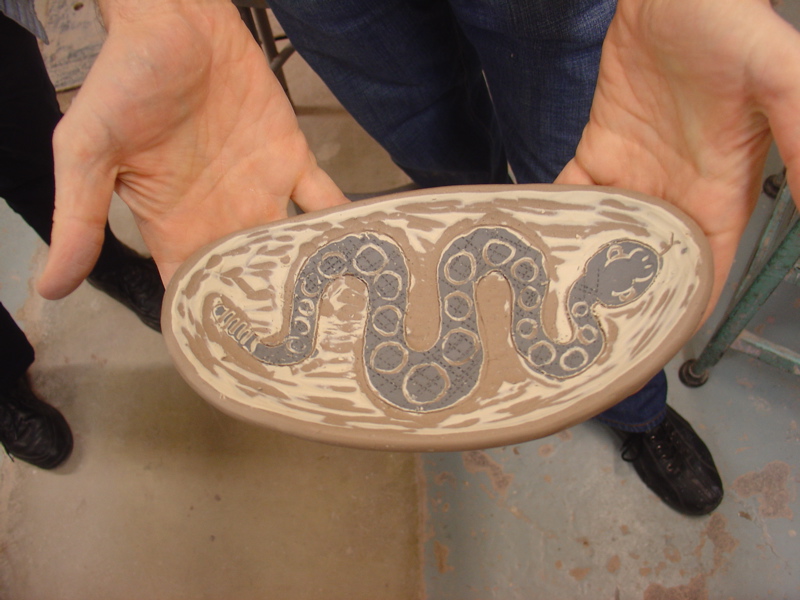
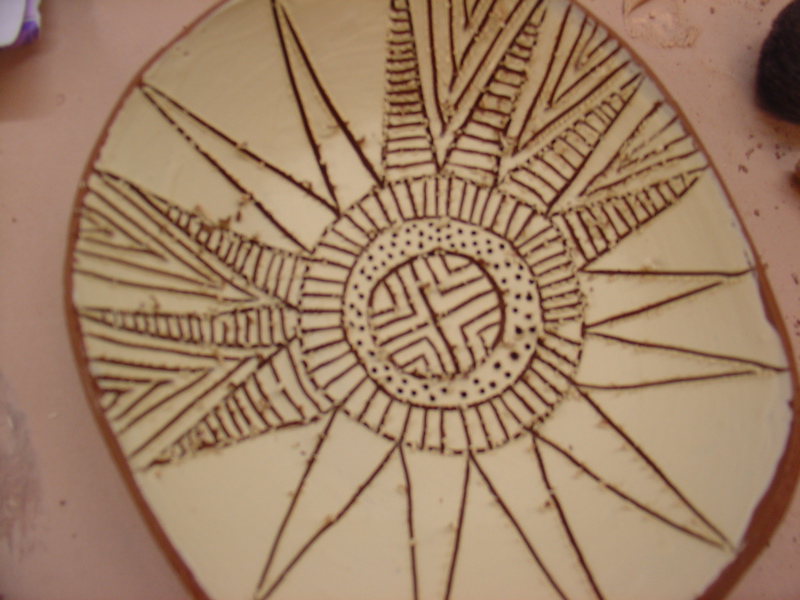 Seeing this last example reminds me to tell you that:
Seeing this last example reminds me to tell you that:
A.. this technique is great for a delicate and intricate design and
B. CLAY BURRS- these are the bane of any sgraffito-er’s existence. You must have the patience to let them dry before you try to get them off otherwise they will stick back down onto your pot. Usually they dry pretty quickly as they are so small and sticking up, they get a lot of air around them.
Once they are dry, you can easily knock them off with a brush- another caution: DO NOT use a stiff bristled brush or you will scratch your slip surface. I use a makeup brush. These are idea, soft and easy to find – either in a pharmacy or the garbage on moving day!
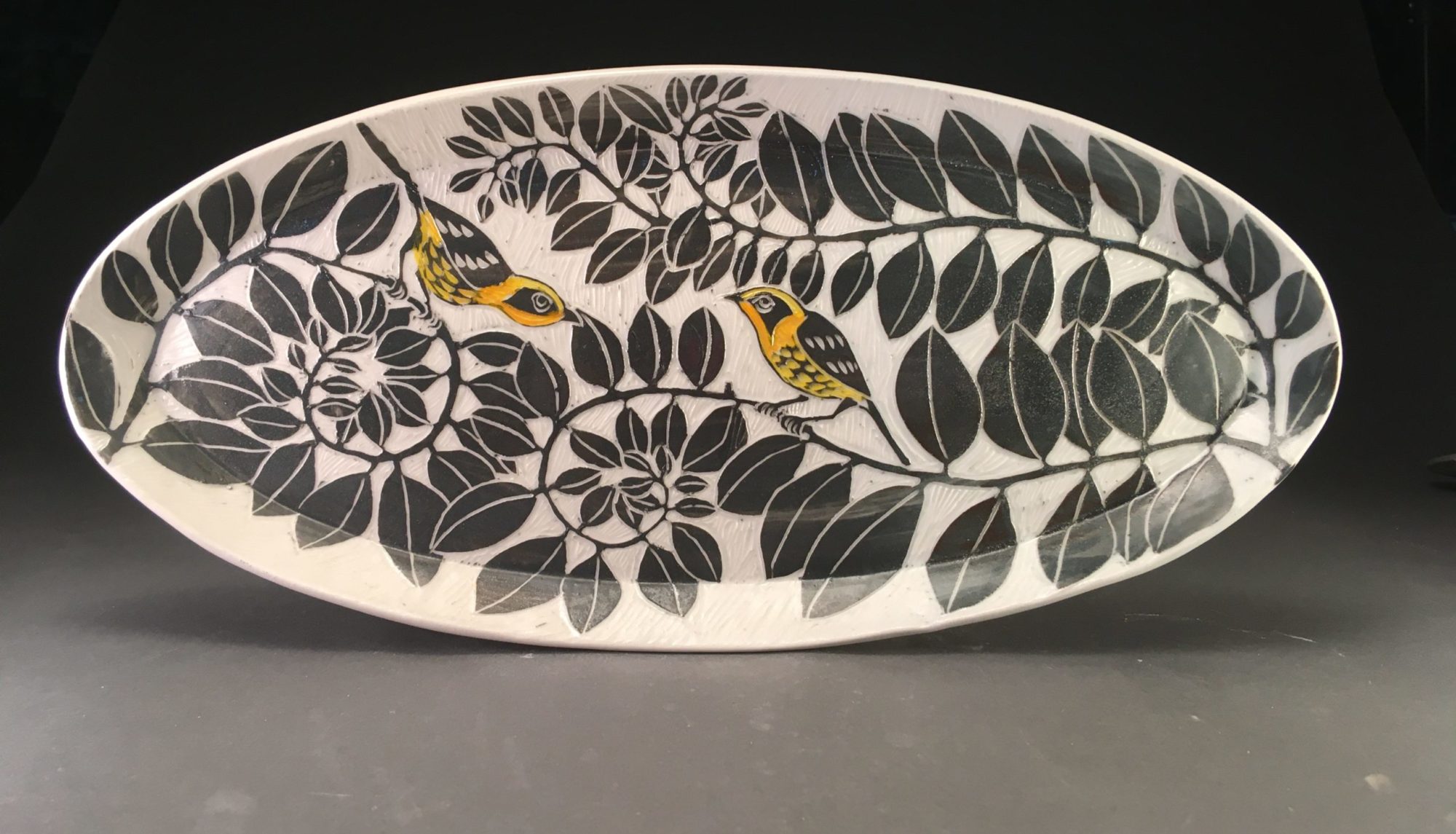
Glynnis,
These are all so lovely…I even recognized a bowl of mine (what a surprise to see that)…I enjoy the detailed description and the photos…so wonderful. Thanks for all you do & all you are to me.
MOE 🙂
i was looking for some inspiration for projects in highschool ceramic class… i definitely got it:) im usually all about intricately detailed pieces however now i see that simplicity speaks as well, nice work:)
I am in a ceramic class at the present and we are going to Scraffitto. Si I stopped by for some examples. They are beautiful. Thanks